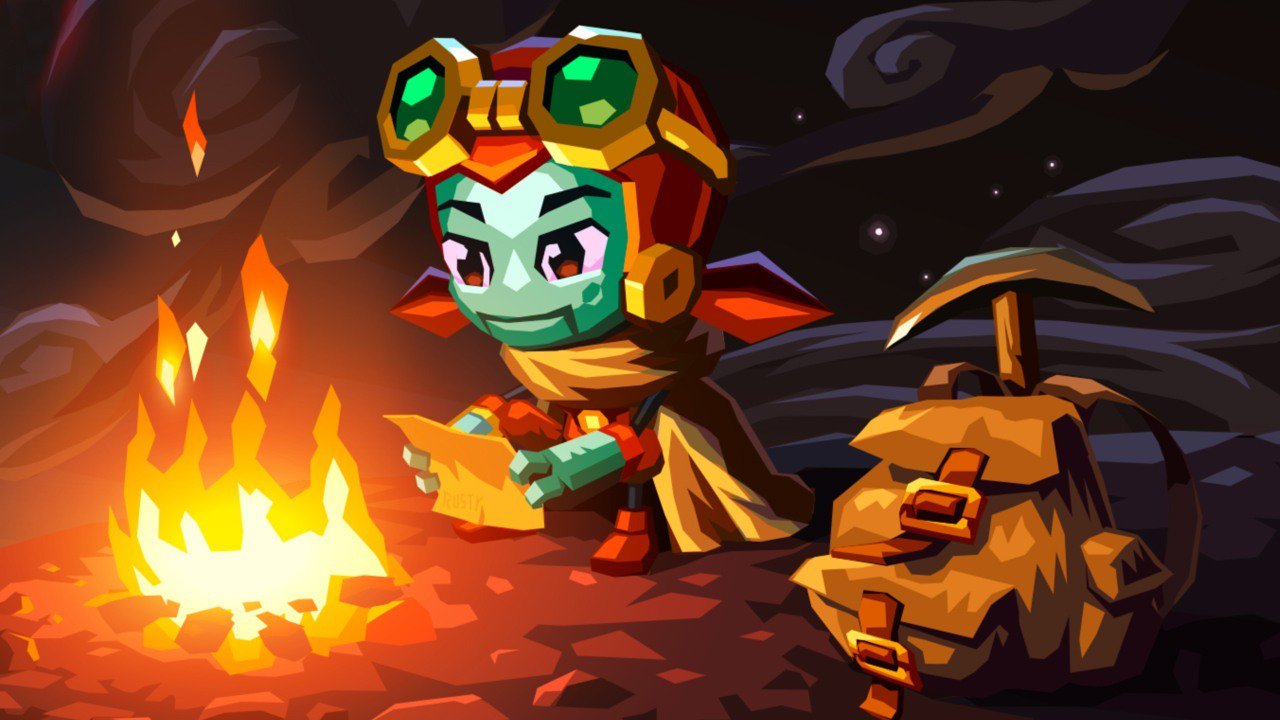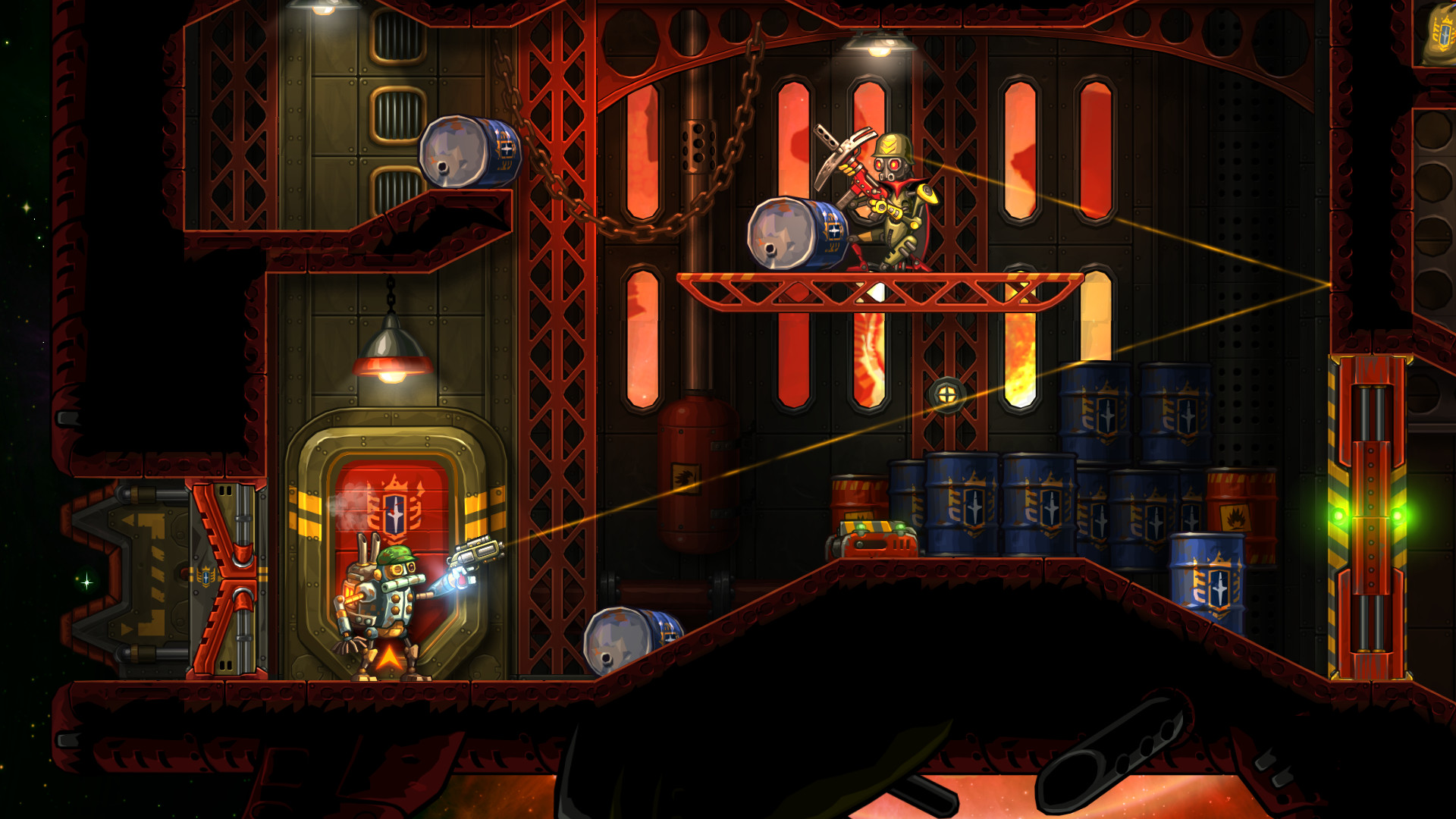How SteamWorld bucked 'the easy route' and became a series without a genre
The making of a steampunk universe.

Nearly a decade before SteamWorld Dig 2, developer Image & Form, or at least the shell of it, was a work-for-hire studio churning out dozens of educational games. It paid the bills, but to hear CEO Brjann Sigurgeirsson tell it, "it felt like a slow suicide." Sigurgeirsson and his team were ready to make more creative, challenging games. But they had a problem: 'from the makers of a bunch of educational games' isn't a particularly sexy tagline.
"I was discussing IP and brand recognition with some other people in the industry, probably over a few beers," Sigurgeirsson says. "Someone mentioned that one of their biggest problems when releasing a new game was explanation. Unless your core gameplay is clear-cut, for example an FPS, you have some serious explaining to do. Before people consider buying your game, they usually want to understand what they're about to buy. Not only do you have to make people understand the gameplay, you also must describe the setting, the protagonists and the hardships they're up against. That can be a lot for anyone to take in, and trying new flavors for the sake of trying is typically unlikely.
I was dying for us to have an IP of our own. It would be so reassuring, a stable place or identity.
Brjann Sigurgeirsson
"I thought that sounded interesting. How can you shorten a consumer's road to a purchase? How do other industries do it? I just mentioned flavors, and that's central. If I like a particular ice cream brand, I probably wouldn't mind trying more than one of their varieties. And if I like them very much, I'd probably want to try any of their new flavors as soon as it arrives."

A new flavor
Image & Form was a new player in a crowded indie scene. They didn't just want a good game, they wanted a good brand. In 2010, they found it with SteamWorld Tower Defense for the Nintendo DS, the game that would be the progenitor of the SteamWorld series.
"I was dying for us to have an IP of our own," Sigurgeirsson says. "It would be so reassuring, a stable place or identity. 'The makers of the SteamWorld games.' That's tangible, as opposed to 'we make really cool games,' which is what I was saying before SteamWorld.
"That's the base of the SteamWorld philosophy. We still have to explain the gameplay of most every game, but we've gained the trust of a lot of players. Many are eager to try whatever new flavors we think up, because whatever it is it'll probably be pretty good. They know and trust the brand, and that's the growing power of an IP that's already pretty strong."

The SteamWorld name got its first big boost with SteamWorld Dig in 2013. The Metroidvania dig-'em-up expanded on the steampunk aesthetic established in SteamWorld Tower Defense and fleshed out the world's robot characters. Critically, it also sold pretty well. A sequel looked like a sure bet, but instead of moving straight onto SteamWorld Dig 2, in 2016 Image & Form made SteamWorld Heist, a turn-based, XCOM-like strategy game.
Keep up to date with the most important stories and the best deals, as picked by the PC Gamer team.
It may seem as if establishing your world and using that over and over again would restrict you, but it's the other way around.
Brjann Sigurgeirsson
"I was concerned that if we'd taken 'the easy route,' that is, making SteamWorld Dig 2 immediately after the original, it would've been harder for us to move into other types of gameplay after that," Sigurgeirsson says. "That shift would have been harder to explain, and we [would have] probably followed that one with SteamWorld Dig 3, and so on."
After years of making educational games, Sigurgeirsson didn't want to fall into another rut. So, in the interest of grooming a flexible series, he and his team decided to build out instead of just up. SteamWorld Heist set a precedent for radically different genres fitting under the SteamWorld umbrella. SteamWorld Dig 2 followed in 2017, but Heist's release and subsequent success proved that SteamWorld could conceivably include yet more genres.

We have the technology
"The robot setting opens up all kinds of possibilities," Sigurgeirsson says. "It may seem as if establishing your own world, character gallery or setting and using that over and over again would restrict you, but it's the other way around: it gives you the freedom to experiment with every other parameter. If you yourself know how your world and your characters work, you don't have to think or worry about that aspect too much. And if people are familiar with your idea and have been 'taught' what to expect, they can be surprised by all the other things you've thought up."
Surprise is also central to SteamWorld's reputation. SteamWorld Dig and Dig 2 are great because they put a unique spin on Metroidvania-style exploration. As I said in my preview, digging navigable tunnels makes exploration careful and calculated, certainly more so than in games like Hollow Knight and Dead Cells. The intrinsic focus on movement also makes the items you discover feel less like keys to open sequence-gated doors and more like upgrades to your everyday arsenal. A jetpack might let you access a new area, but it will also change the way you dig and traverse your tunnels. Likewise, while you might think strategic options would be cripplingly limited in 2D, SteamWorld Heist uses manual aiming and a focus on ricocheting bullets to build huge depth. And Image & Form isn't necessarily finished with this design space.

"I'm sure there's at least one game in between Dig 2 and Heist, and there should be more to come after Heist as well," Sigurgeirsson says. "I don't think we're done there yet. But we needed a break from that particular part of SteamWorld history, so right now we're working on something radically different."
Sigurgeirsson couldn't share exactly what's next for SteamWorld, but he did say he's interested in experimenting with shooters, particularly rail shooters and first-person shooters. Which dovetails with the other Big Question: what comes after SteamWorld?
"I think the array of possibilities in SteamWorld is very, very wide," Sigurgeirsson says. "The size—or potential size—of SteamWorld is probably not what is going to stop us making SteamWorld games; rather, it's that we want to make other things as well. We won't have time to make everything we want to try, so I guess the number of efficient hours—the hours we have left—is the real limit.
"It can be exactly anything. But I think we'll keep that—whatever that non-SteamWorld game is—pretty far away from SteamWorld. SteamWorld is big enough for all steambots, all other entities are probably happier somewhere else."

Austin freelanced for PC Gamer, Eurogamer, IGN, Sports Illustrated, and more while finishing his journalism degree, and has been a full-time writer at PC Gamer's sister publication GamesRadar+ since 2019. They've yet to realize that his position as a staff writer is just a cover-up for his career-spanning Destiny column, and he's kept the ruse going with a focus on news, the occasional feature, and as much Genshin Impact as he can get away with.

